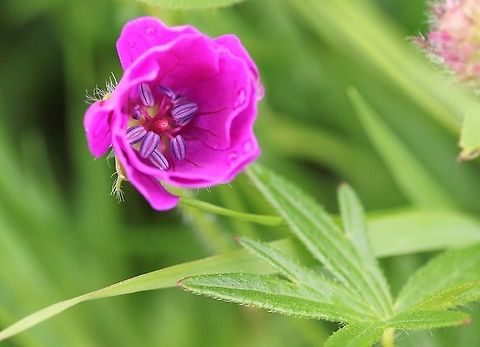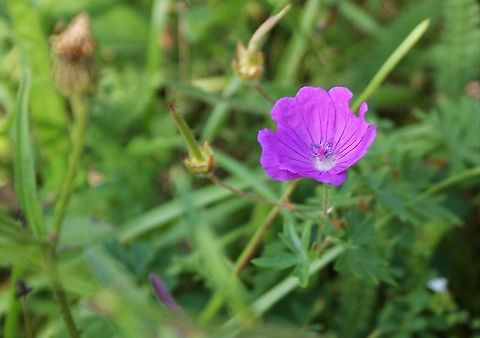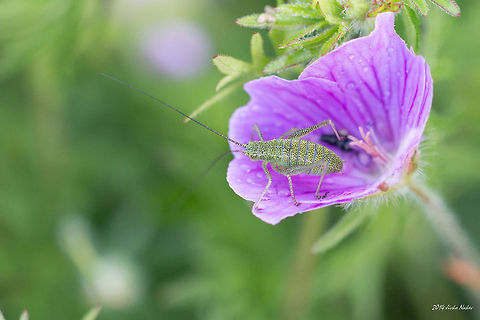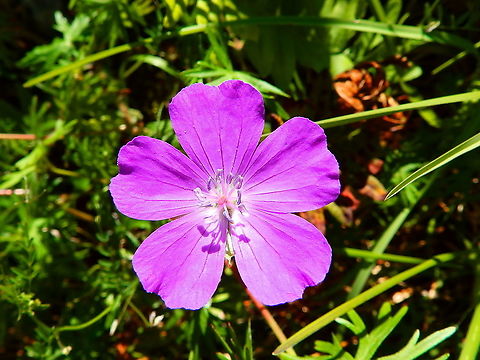
Appearance
The biological form of ''Geranium sanguineum'' is hemicryptophyte scapose, as its overwintering buds are situated just below the soil surface and the floral axis is more or less erect with a few leaves. It has a thick rhizome. The stems are prostrate to ascending, well developed, very branched and hairy. This plant reaches on average 30–50 centimetres in height. The petiolate leaves have five lobes , each segment is tripartite in large teeth. The flowers have a diameter of 2.5 to 4 cm. and are purple The flowering period extends from May through October. The flowers are hermaphrodite and pollinated by insects . The most common flower visitors are Syrphidae and Hymenoptera, but also butterflies and Coleoptera. The fruit is a capsule consisting of five achenes, with a pubescent surface.
Naming
The genus name is derived from the Greek γέρανος , meaning crane, with reference to the appearance of the fruit capsule. The specific Latin name ''sanguineum'' refers to the red color assumed by the leaves in Autumn.
Distribution
''Geranium sanguineum'' is native to Europe and temperate Asia. It is widespread in most of Europe up to Caucasus. In the north-east of Ireland it a rare garden escape.
Habitat
The typical habitat of this species are the woods, especially deciduous forests, forest edges, the dry bushy hillsides, arid grasslands and xerophilous scrubs . It prefers siliceous and calcareous soil with neutral pH, with low nutritional value, at an altitude of 0–1,200 metres above sea level.References:
Some text fragments are auto parsed from Wikipedia.